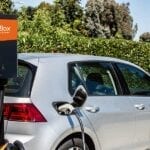Several groups are studying the impact of electrification on the U.S. power system, including the National Renewable Energy Laboratory (NREL) in Colorado and its research partners, which include the Electric Power Research Institute (EPRI), and national laboratories such as Lawrence Berkeley and Oak Ridge. NREL, as part of its Electrification Futures Study, has used what it calls “multiple analytic tools and models to develop and assess electrification scenarios designed to quantify potential energy, economic, and environmental impacts to the U.S. power system and broader economy.”
Among the research being done by analysts and energy companies concerns the impact of electric vehicles (EVs) on power demand and the grid. EVs are part of a global push toward electrification, moving away from fossil fuels as the transportation sector seeks to decarbonize. EPRI, in fact, has a Fleet Electric Vehicle Infrastructure Initiative, along with an electric transportation program that looks at grid impacts from EVs.
Companies involved in the design and manufacture of EV charging systems are part of this research as well, seeking more better charging methods for vehicle owners to provide cost savings and more efficient use of electricity. Joseph Vellone, head of North America for ev.energy, a company developing what it calls “a smart, cloud-based platform that automatically optimizes EV charging, for a greener, cheaper charge,” spoke with POWER about his company’s work, how EVs fit within electrification, and the importance of reducing carbon emissions from transportation.
POWER: What is the major, or the best, argument for electrification?
Vellone: Electrification is the only way to reach our net-zero target and tackle climate change. Electrifying our infrastructure and powering it with 100% renewable energy presents the U.S. with a once-in-a-generation opportunity to rebuild our infrastructure in a way that is robust, future-proof, and emissions-free.

Electric vehicles are a low-hanging fruit on our path to net zero: We’ve figured out a way to produce them at scale, we are already on our way to building out robust charging networks, and companies like ev.energy are providing that EV charging can be aligned with renewable energy generation to deliver a truly zero-carbon charge.
POWER: Is the trend toward electrification good for consumers? Studies have shown it is less expensive to heat with natural gas, and thus home (and business) heating bills would increase. Is the economic argument valid?
Vellone: Because we’re still in the early days of electrification, consumers are seeing higher costs that will naturally decrease over time as we scale the country’s all-electric infrastructure.
However, it’s important to note that consumers are enjoying lower costs in certain electric segments. For example, BloombergNEF and ev.energy published a study last year that EV drivers in California are already saving more than $1,000 per year by smart-charging their vehicle compared to the equivalent of refueling at a gas station.
Want to learn more about electrification? Read “Electrification Ignites Debate Over Future of Energy” in the April 2022 issue of POWER. Also check out this POWER Interview, featuring a roundtable discussion of electrification from several energy experts.
POWER: Some energy analysts have expressed concerns about the impact of increased electrification (and greater demand for power) on the power grid. Should utilities and others be concerned about the greater demand on the already stressed transmission and distribution infrastructure?
Vellone: Utilities should absolutely be concerned about the impact of electrification on the power grid. The typical EV alone consumes about as much electricity as an average American household, so we’re looking at a potential doubling of residential electricity demand with the same poles and wires that were built 50+ years ago.
However, EVs don’t need to become a liability to the power grid; in fact, when their charging is intelligently managed, they can become a grid asset. The good news is that BloombergNEF and ev.energy analyzed more than 1 million charging sessions on the ev.energy platform and found that most light-duty EVs remain plugged in for 12-14 hours at a time, but only require 1-3 hours of charge per session in order to meet the driver’s battery requirements. This means that there is a tremendous amount of flexibility in the way in which we charge EVs, kind of like when you plug in your smartphone before going to sleep and (hopefully) have an 8-hour window to charge it.
Your charging could be delayed, slowed down, or interrupted to meet grid requirements, and you probably wouldn’t notice while you sleep, as long as it’s charged to 100% by the time your alarm goes off. This concept is called “smart charging” and ev.energy has already proven its benefits with more than 50,000 EVs. We partner with major utilities like Southern California Edison and Avangrid to intelligently manage their customers’ EV charging in the background while still ensuring the vehicle is charged by the time the driver needs it.
In addition to helping keep the grid balanced, EV drivers also benefit from the financial incentives these utilities pay their customers for their flexibility, which can range from a 50% discount on the price of their electricity to flat monthly incentives as high as $50 per month. In states like Texas, ev.energy works directly with the grid operator ERCOT to aggregate EVs into a Virtual Power Plant that can be turned on or off in line with grid conditions. This can help to prevent blackouts like the one that hit Texas in February 2021.
POWER: Are some methods of electrification—say, in the transportation sector—more critical to pursue than others?
Vellone: The transportation sector is the largest contributor to U.S. greenhouse gas emissions, so I’d say the electrification and decarbonization of transportation should be our top priority in the journey to net-zero.
POWER: How much should energy efficiency be part of the electrification strategy?
Vellone: Energy efficiency absolutely needs to be a part of this country’s electrification strategy. It’s not enough to electrify everything; we also need to consume less electricity. Smart thermostats and higher LEED standards are two proven ways to do this.
However, some sectors are less favorable to energy efficiency, and transportation is one of them. Planes, trains and automobiles need to keep moving to keep our economy humming along, and while there are some marginal improvements to be made in the energy efficiency of these vehicles, the greatest improvement will come from electrifying them and powering them with zero-carbon energy.
—Darrell Proctor is a senior associate editor for POWER (@POWERmagazine).










